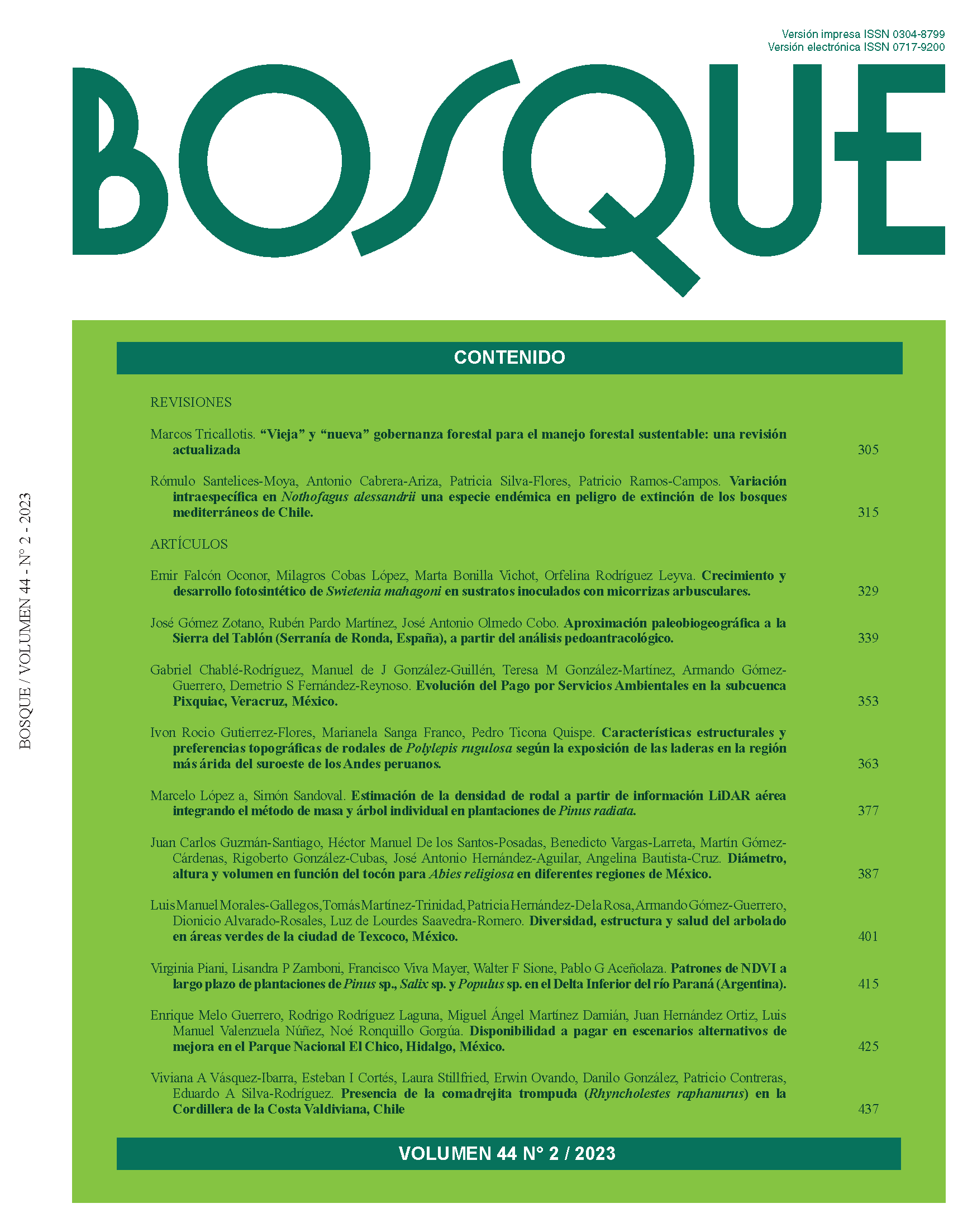Long term NDVI patterns of Pinus spp., Salix spp. and Populus spp. plantations in the Lower Delta of the Paraná River (Argentina)
Conteúdo do artigo principal
Resumo
Plantation forests are one of the main productive activities in the Lower Delta of the Paraná River. The plantation area corresponds to a wetland in which hydrological processes are a fundamental part of the landscape dynamics. However, forestation is also known for generating different environmental impacts, which must be understood in order to effectively manage it. In a context of studies at the regional scale, it is useful to identify the relationships between functional attributes of plantation forests and those derived from satellite images. The aim of this paper is to evaluate the use of remote sensing for the recognition of phenological patterns of Pinus spp., Salix spp. and Populus spp. forestation of the Paraná River Delta. We use medium spatial resolution satellite images for the period of 2008 to 2018. Normalized differential vegetation index (NDVI) patterns were analyzed through the use of geographic information systems and Google Earth Engine algorithms. NDVI records, by genus and by date, were used to generate seasonal, annual and monthly time series. The plantations showed a markedly seasonal response, with lower values in winter and higher values in spring/summer. Pinus spp. showed mean annual NDVI values higher than Populus spp. and Salix spp., according to its perennial (Pinus spp.) and semi-deciduous (Salicaceae) characteristics. New information and methodologies regarding the spectral responses of forestation in the region was obtained from large volumes of data available in the Cloud, which made it possible to understand in detail the phenological patterns of different types of forestation.

